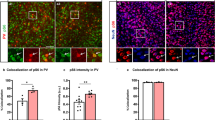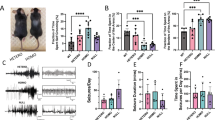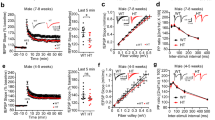Abstract
Protein synthesis regulation via mammalian target of rapamycin complex 1 (mTORC1) signaling pathway has key roles in neural development and function, and its dysregulation is involved in neurodevelopmental disorders associated with autism and intellectual disability. mTOR regulates assembly of the translation initiation machinery by interacting with the eukaryotic initiation factor eIF3 complex and by controlling phosphorylation of key translational regulators. Collybistin (CB), a neuron-specific Rho-GEF responsible for X-linked intellectual disability with epilepsy, also interacts with eIF3, and its binding partner gephyrin associates with mTOR. Therefore, we hypothesized that CB also binds mTOR and affects mTORC1 signaling activity in neuronal cells. Here, by using induced pluripotent stem cell-derived neural progenitor cells from a male patient with a deletion of entire CB gene and from control individuals, as well as a heterologous expression system, we describe that CB physically interacts with mTOR and inhibits mTORC1 signaling pathway and protein synthesis. These findings suggest that disinhibited mTORC1 signaling may also contribute to the pathological process in patients with loss-of-function variants in CB.
Similar content being viewed by others
Log in or create a free account to read this content
Gain free access to this article, as well as selected content from this journal and more on nature.com
or
References
Laplante M, Sabatini DM : mTOR signaling at a glance. J Cell Sci 2009; 122: 3589–3594.
Han J, Wang B, Xiao Z et al: Mammalian target of rapamycin (mTOR) is involved in the neuronal differentiation of neural progenitors induced by insulin. Mol Cell Neurosci 2008; 39: 118–124.
Han J, Xiao Z, Chen L et al: Maintenance of the self-renewal properties of neural progenitor cells cultured in three-dimensional collagen scaffolds by the REDD1-mTOR signal pathway. Biomaterials 2013; 34: 1921–1928.
Magri L, Cambiaghi M, Cominelli M et al: Sustained activation of mTOR pathway in embryonic neural stem cells leads to development of tuberous sclerosis complex-associated lesions. Cell Stem Cell 2011; 9: 447–462.
Jaworski J, Sheng M : The growing role of mTOR in neuronal development and plasticity. Mol Neurobiol 2006; 34: 205–219.
Costa-Mattioli M, Monteggia LM : mTOR complexes in neurodevelopmental and neuropsychiatric disorders. Nat Neurosci 2013; 16: 1537–1543.
Kelleher 3rd RJ, Bear MF : The autistic neuron: troubled translation? Cell 2008; 135: 401–406.
Auerbach BD, Osterweil EK, Bear MF : Mutations causing syndromic autism define an axis of synaptic pathophysiology. Nature 2011; 480: 63–68.
Hoeffer CA, Sanchez E, Hagerman RJ et al: Altered mTOR signaling and enhanced CYFIP2 expression levels in subjects with fragile X syndrome. Genes Brain Behav 2012; 11: 332–341.
Tang G, Gudsnuk K, Kuo SH et al: Loss of mTOR-dependent macroautophagy causes autistic-like synaptic pruning deficits. Neuron 2014; 83: 1131–1143.
Oguro-Ando A, Rosensweig C, Herman E et al: Increased CYFIP1 dosage alters cellular and dendritic morphology and dysregulates mTOR. Mol Psychiatry 2015; 20: 1069–1078.
Holz MK, Ballif BA, Gygi SP, Blenis J : mTOR and S6K1 mediate assembly of the translation preinitiation complex through dynamic protein interchange and ordered phosphorylation events. Cell 2005; 123: 569–580.
Sertie AL, de Alencastro G, De Paula VJ, Passos-Bueno MR : Collybistin and gephyrin are novel components of the eukaryotic translation initiation factor 3 complex. BMC Res Notes 2010; 3: 242.
Kins S, Betz H, Kirsch J : Collybistin, a newly identified brain-specific GEF, induces submembrane clustering of gephyrin. Nat Neurosci 2000; 3: 22–29.
Harvey K, Duguid IC, Alldred MJ et al: The GDP-GTP exchange factor collybistin: an essential determinant of neuronal gephyrin clustering. J Neurosci 2004; 24: 5816–5826.
Poulopoulos A, Aramuni G, Meyer G et al: Neuroligin 2 drives postsynaptic assembly at perisomatic inhibitory synapses through gephyrin and collybistin. Neuron 2009; 63: 628–642.
Saiepour L, Fuchs C, Patrizi A, Sassoè-Pognetto M, Harvey RJ, Harvey K : Complex role of collybistin and gephyrin in GABAA receptor clustering. J Biol Chem 2010; 285: 29623–29631.
Tyagarajan SK, Ghosh H, Harvey K, Fritschy JM : Collybistin splice variants differentially interact with gephyrin and Cdc42 to regulate gephyrin clustering at GABAergic synapses. J Cell Sci 2011; 124: 2786–2796.
Hoon M, Soykan T, Falkenburger B et al: Neuroligin-4 is localized to glycinergic postsynapses and regulates inhibition in the retina. Proc Natl Acad Sci USA 2013; 108: 3053–3058.
Sabatini DM, Barrow RK, Blackshaw S et al: Interaction of RAFT1 with gephyrin required for rapamycin-sensitive signaling. Science 1999; 284: 1161–1164.
Wuchter J, Beuter S, Treindl F et al: A comprehensive small interfering RNA screen identifies signaling pathways required for gephyrin clustering. J Neurosci 2012; 32: 14821–14834.
Marco EJ, Abidi FE, Bristow J et al: ARHGEF9 disruption in a female patient is associated with X linked mental retardation and sensory hyperarousal. J Med Genet 2008; 45: 100–105.
Kalscheuer VM, Musante L, Fang C et al: A balanced chromosomal translocation disrupting ARHGEF9 is associated with epilepsy, anxiety, aggression, and mental retardation. Hum Mutat 2009; 30: 61–68.
Shimojima K, Sugawara M, Shichiji M et al: Loss-of-function mutation of collybistin is responsible for X-linked mental retardation associated with epilepsy. J Hum Genet 2011; 56: 561–565.
Lesca G, Till M, Labalme A et al: De novo Xq11.11 microdeletion including ARHGEF9 in a boy with mental retardation, epilepsy, macrosomia, and dysmorphic features. Am J Med Genet A 2010; 155A: 1706–1711.
Takahashi K, Tanabe K, Ohnuki M et al: Induction of pluripotent stem cells from adult human fibroblasts by defined factors. Cell 2007; 131: 861–872.
Marchetto MC, Carromeu C, Acab A et al: A model for neural development and treatment of Rett syndrome using human induced pluripotent stem cells. Cell 2010; 143: 527–539.
Schmidt EK, Clavarino G, Ceppi M, Pierre P : SUnSET, a nonradioactive method to monitor protein synthesis. Nat Methods 2009; 6: 275–277.
Sharma A, Hoeffer CA, Takayasu Y et al: Dysregulation of mTOR signaling in fragile X syndrome. J Neurosci 2010; 30: 694–702.
Meikle L, Talos DM, Onda H et al: A mouse model of tuberous sclerosis: neuronal loss of Tsc1 causes dysplastic and ectopic neurons, reduced myelination, seizure activity, and limited survival. J Neurosci 2007; 27: 5546–5558.
Zhou J, Blundell J, Ogawa S et al: Pharmacological inhibition of mTORC1 suppresses anatomical, cellular, and behavioral abnormalities in neural-specific Pten knock-out mice. J Neurosci 2009; 29: 1773–1783.
Ebert DH, Greenberg ME : Activity-dependent neuronal signalling and autism spectrum disorder. Nature 2013; 493: 327–337.
Suzuki AM, Griesi-Oliveira K, de Oliveira Freitas Machado C et al: Altered mTORC1 signaling in multipotent stem cells from nearly 25% of patients with nonsyndromic autism spectrum disorders. Mol Psychiatry 2015; 20: 551–552.
Acknowledgements
We are grateful to all of the subjects who participated in this work. We thank Elaine Cristina Zachi for performing formal psychological evaluation of the patient. We thank Marta Diniz and Andressa Morales for technical assistance. We thank Soely Moura, Aline Moraes, and Constância G Urbani for secretarial assistance. This work was supported by grants from CNPq (National Counsel of Technological and Scientific Development), FAPESP (São Paulo Research Foundation), CAPES (Higher Education Co-Ordination Agency), and Autismo and Realidade.
Author information
Authors and Affiliations
Corresponding author
Ethics declarations
Competing interests
The authors declare no conflict of interest.
Rights and permissions
About this article
Cite this article
Machado, C., Griesi-Oliveira, K., Rosenberg, C. et al. Collybistin binds and inhibits mTORC1 signaling: a potential novel mechanism contributing to intellectual disability and autism. Eur J Hum Genet 24, 59–65 (2016). https://doi.org/10.1038/ejhg.2015.69
Received:
Revised:
Accepted:
Published:
Issue date:
DOI: https://doi.org/10.1038/ejhg.2015.69
This article is cited by
-
Human ARHGEF9 intellectual disability syndrome is phenocopied by a mutation that disrupts collybistin binding to the GABAA receptor α2 subunit
Molecular Psychiatry (2022)
-
Sex differences in the effects of prenatal bisphenol A exposure on autism-related genes and their relationships with the hippocampus functions
Scientific Reports (2021)
-
The role of GABAergic signalling in neurodevelopmental disorders
Nature Reviews Neuroscience (2021)
-
De novo ARHGEF9 missense variants associated with neurodevelopmental disorder in females: expanding the genotypic and phenotypic spectrum of ARHGEF9 disease in females
neurogenetics (2021)
-
Copy number variants (CNVs): a powerful tool for iPSC-based modelling of ASD
Molecular Autism (2020)



